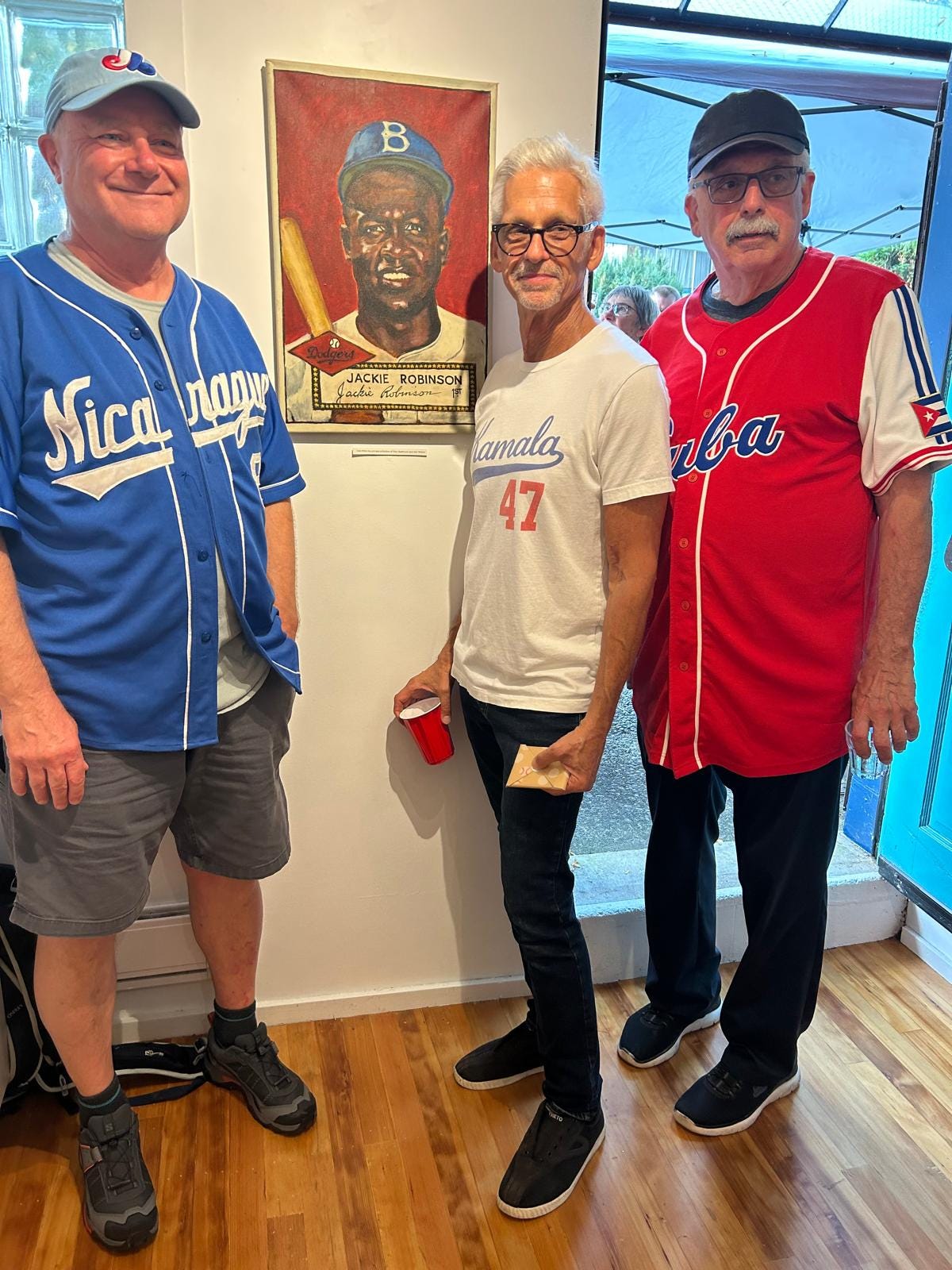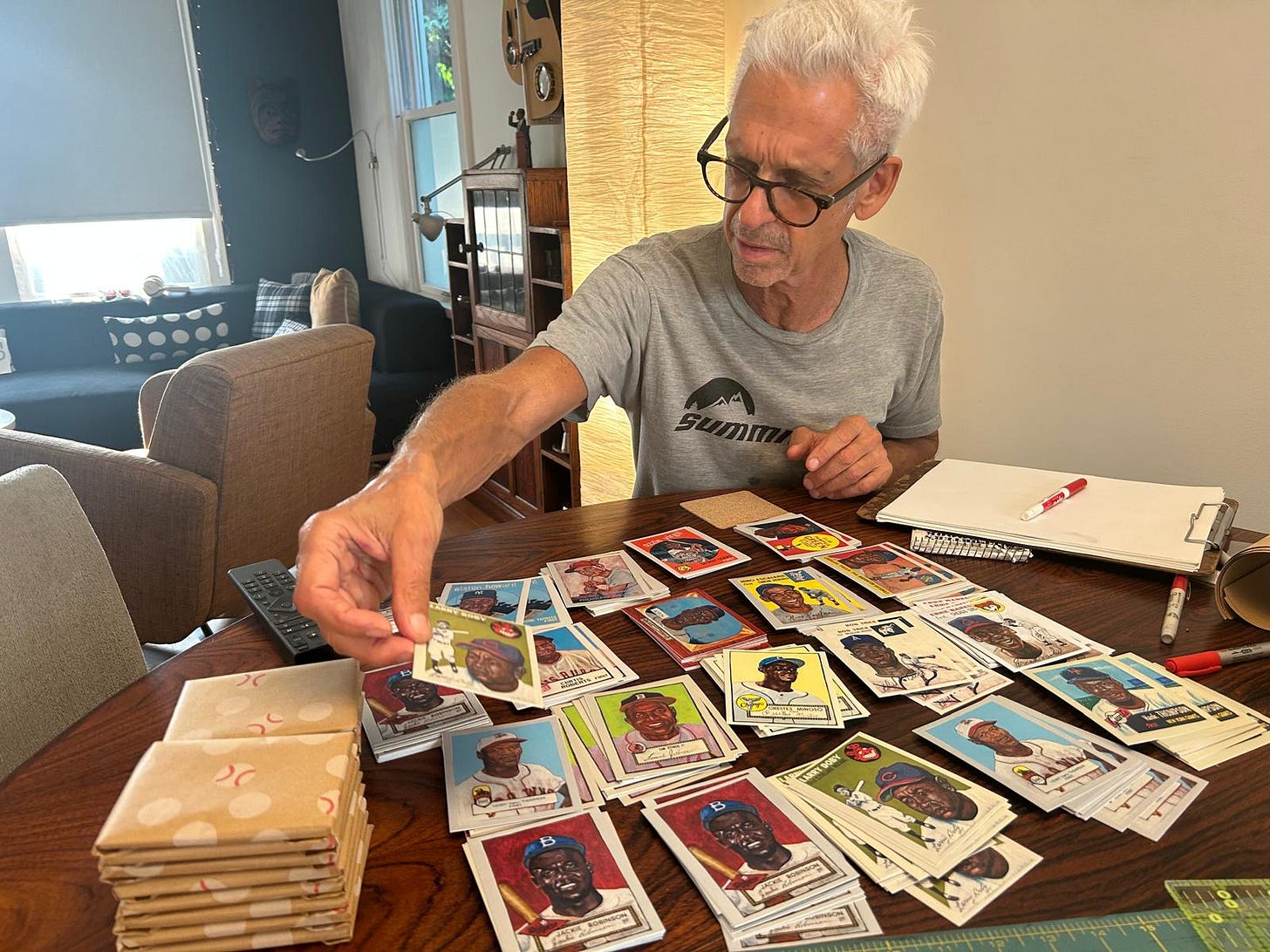When Jackie Robinson came to bat against Johnny Sain on April 15, 1947, he became the first black player to appear in a major league game since 1884. While Robinson was the first to break what was referred to as the “colour barrier”, he was not the only one. The barrier had to be broken 16 times, once for each of the 16 franchises that constituted the major leagues.

Robinson’s trials and triumphs were well documented: death threats, knock-down pitches, rebuffs from teammates, denial of the right to stay in hotels on road trips, cascades of racial slurs from the fans and opposing benches. The men who broke the colour barrier for each team suffered similar or even greater indignities, particularly in cities like St. Louis and Cincinnati, with southern cultures and in Boston, where the Red Sox resisted integration until 1959, a dozen years after Robinson’s debut with the Brooklyn Dodgers.
These paintings of those who followed Robinson, and were the first to play for the other major league teams, pays tributes to these pioneers. Some, like Sam Jethroe and Henry Thompson, had starred in the Negro Leagues and reached the major leagues too late to display the talents they displayed when in their primes. Others, like Ernie Banks, Minnie Minoso and Elston Howard were younger and enjoyed stellar careers that earned them places in the Hall of Fame. And others, like Bob Trice, careers were adversely affected by the racism they encountered.
Above: My pal, Tom Hawthorn, unpacking the Opening Day set of 16 cards.
Since I started this series we’ve witnessed the murder of George Floyd, the literal whitewashing of slavery and ICE raids hunting people of colour throughout the United States. I profoundly regret that these paintings seem even more relevant today.
Coming soon, a post on each painting.
If you're in Vancouver next Saturday, drop by the Paneficio Gallery, 800 Keefer St, between noon and 2 for the Vancouver Art Walk.



